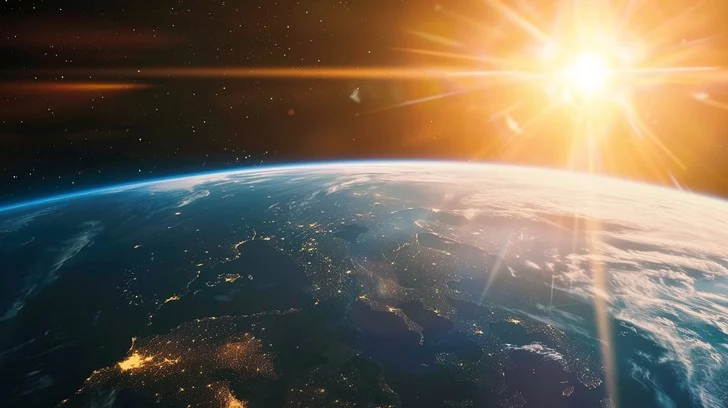Solar is so much cheaper than every other generation technology and getting cheaper. Is it inevitable and wonderful that the entire world will end up running on solar power connected across the world?
We are in the mid stages of a global energy revolution where we are moving to using almost 100% renewable energy. We are also busy electrifying end uses and, with some exceptions, there are clear routes to a net zero future. (Even in those hard to abate sectors, once you have cheap enough electricity there are ways.)
Intermittency is a big issue, but that can be managed with inter-connectors, mixing generation types, demand side management, batteries, and despatchable back-up power with green hydrogen (in small amounts).
I have written before about how amazing this future is going to be. The really big difference with renewable energy and fossil fuels, (apart from all that GHG emissions stuff), is that they only get cheaper and cheaper and cheaper. Once you start to think about the implications of that it is mind blowing.
Up to now, I had always assumed that different parts of the world would have different energy generation make-ups because of their geography, etc. – Solar domination in the Middle East and North Africa, hydro in some places, offshore wind in the UK, etc. Some places would be more balanced. The USA and Canada, for example, have several good resources.
The reason I had thought that was because electricity is national, or regional at most. There is a global price for oil and, increasingly, gas. You often hear about how the global oil price has risen/fallen. You never hear that about electricity, because there is no global price for electricity, for now.
Even with electrical interconnectors the UK is still only a regional electricity system; Norway, Iceland, Ireland, France, etc. And still, the amounts are relatively small.
Solar is so cheap now, however, I wonder we will end up with almost all power being generated by solar power sent around the world through a big mesh of interconnectors.
Many of us are familiar with the square on a map of the Sahara Desert, showing how much of it we would need to cover in solar farms to generate enough electricity to power the world. This kind of thing from the IEEE.

It is an amazing image, but I had always thought of it as a fun fact. It wasn’t something you could treat literally; how would you get the electricity from there to Argentina? Would you really want all your power being generated in a foreign country? What about all the losses transmitting electricity in cables over long distances? What about nighttime? Surely it would be cheaper to generate electricity locally and it will be horses for courses?
Taking those one by one:
On the long distance transmission of electricity over cables, it occurred to me that we already do for hundreds of miles from Norway, etc. and there is now this proposed XLinks project bringing a combination of solar and wind power from Morocco to the UK through an undersea cable. It may never happen, but, according to their calculations, the losses would be 12% on a journey of over 2,000 miles with HVDC cables. There is room to improve on the technology, as well. That means transatlantic cables would have losses of <20%. That is significant, but not catastrophic; heat networks have much bigger losses. The capex on the cables is big, but doable based on decades of energy supply.
The energy security point always seemed big to me; even if Libya could produce all your energy cheaply, would you want to risk your energy system to a foreign country, particularly one in a less stable part of the world? But, if the power is coming from the UAE, Morocco, Libya, Portugal, Spain, Greece, America, Turkey, Mexico……., all competing, is it that much of a risk? We are dependent on a few countries for almost all our gas and oil now.
Obviously solar only generates when the sun is shining, but once you have regular enough sun, like in the Middle East and North Africa, you can use batteries to get you through the night. Besides, if the UK is linked to Mexico and Saudi Arabia, the nighttime hardly exists.
The fundamental point driving this is that it cannot be overstated how cheap solar power is. This 2GWp solar farm is selling electricity at £10 per MWh. Nothing else comes close, even with cabling losses over distance. The last round of offshore wind auctions in the UK, gave prices of about £80 per MWh. UK onshore and solar, similar. They can drop, but so will global solar prices. A genuine global mesh of interconnectors could reduce balancing and back-up costs as well.
If I am right, then we need to think through the implications. It may mean places like the UK and Germany can compete again in energy intensive industries as electricity prices levelise across the globe; it will certainly have big grid implications.
This future is a way off and there may be regulatory resistance and a huge amount of infrastructure to deliver, but the economic opportunity to deliver that cheap, clean energy will be huge. We need to continue decarbonising our energy system as cheaply as possible now but be prepared for that solar eclipse that is coming.


Leave a Reply